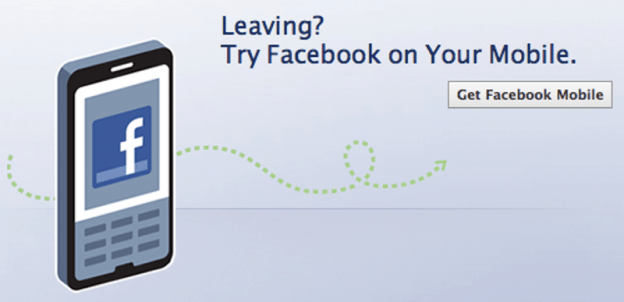 Yesterday marked Facebook’s first earnings call as a publicly traded company, and the phrase “by the skin of your teeth” best sums up how it all went. The company managed to just barely meet analysts’ financial projections (which were suspected to be rather modest, given Facebook’s disappointing IPO) and spoke about user retention, acquisition strategy, and the evolution of Sponsored Stories.
Yesterday marked Facebook’s first earnings call as a publicly traded company, and the phrase “by the skin of your teeth” best sums up how it all went. The company managed to just barely meet analysts’ financial projections (which were suspected to be rather modest, given Facebook’s disappointing IPO) and spoke about user retention, acquisition strategy, and the evolution of Sponsored Stories.
Despite any attempts to hand out rose colored glasses, there is a sticking point that Wall Street and brands simply can’t get over: Facebook and mobile advertising. Numbers showing daily and monthly active users on the Web versus via Facebook’s mobile apps combined with the slowing growth of ad impressions are enough to start scaring Web advertisers.
An eye-tracking survey from EyeTrackShop reveals as much. The company uses integrated desktop and mobile cameras to track users’ reaction to ads, and for this research studied 450 people through 150 eye tracking sessions.
“A lot of big brand clients were asking us to do some research on Facebook advertising on the Web and on mobile,” president Jeff Bander tells me. And the results are what you’d expect: Web ads are beating smartphone ads. The limited amount of space and single-file stream on the smartphone app means that users are paying less attention to ads and Sponsored Stories. But mobile in general isn’t hurting: EyeTrackShop found that Facebook ads on its iPad app actually performed better than on the Web. “IPad ads are seen by 18 percent more people and get 29 percent longer dwell time.”

Bender, however, is more optimistic. “I think they’re totally in the right place at the right time,” he tells me. “So many companies and Wall Street are so hung up on this quarter that they don’t see the bigger picture, the long term perspective.” He’s firmly in camp with those that thing Facebook is reinventing the wheel when it comes to advertising, that Sponsored Stories are going to be its bread and butter, and that the trial and error Facebook is pushing through right now is going to pay off in the long run.
He also points out that any Twitter-gets-mobile-and-Facebook-doesn’t arguments are a little baseless at the moment. “Twitter isn’t a public company – they can say whatever they want and they don’t have to back it up right now.” But Facebook’s edge over the company, he says, is “like night and day” given its active user numbers.
During yesterday’s earnings call, Zuckerberg and co. emphasized that mobile and advertising are a work in progress, and there seems to be a little “going on good faith” attitude here. The problem we’ve been hearing about since early this year remains: people are taking to mobile and Facebook doesn’t know how to get their eyes on ads – which EyeTrackShop has also made quite clear. But Facebook has reinvented consumer-facing content before, and plenty of those inside the industry remain bullish. Now the company just has to convince Wall Street.
Editors' Recommendations
- Meta found over 400 mobile apps ‘designed to steal’ Facebook logins
- Google is bringing new ad formats to its products on mobile devices


